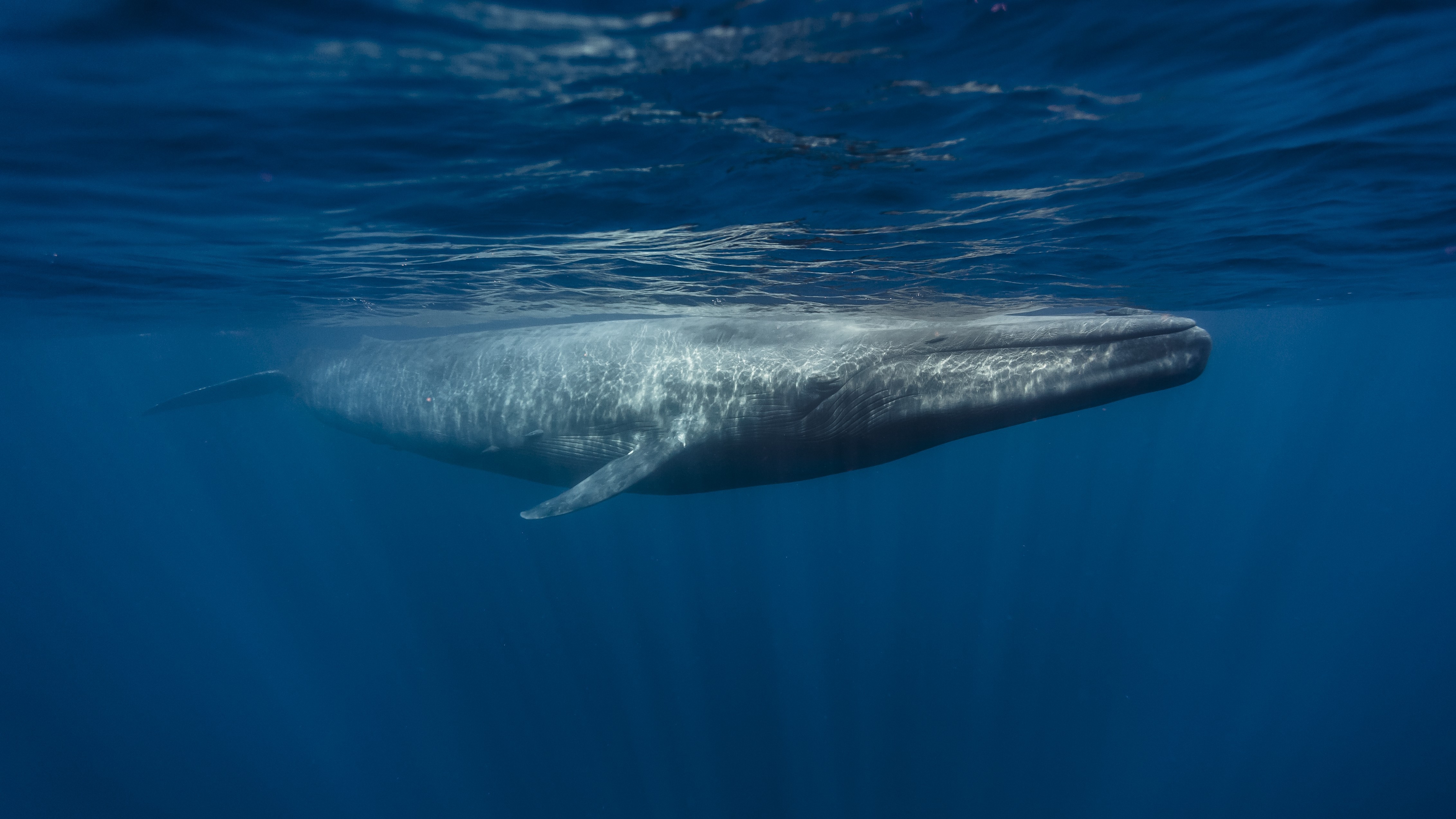Blue whales sing less when they are starving and sing more when food is plentiful, a recent study revealed. Researchers listened to whales off California for six years and found that their singing increased following a marine heatwave — despite multiple news outlets claiming that blue whales are going silent.
Whales have a range of vocalizations, but only the males sing. There’s evidence of males using their songs to attract females and communicate with other males, said study lead author John Ryan, a biological oceanographer at the Monterey Bay Aquarium Research Institute in California. “It’s an essential part of how they sense their world and interact with each other,” he told Live Science.
The singing also provides researchers with an opportunity to study whales. Sound travels very well underwater, so in the vast ocean, listening for animals can be more efficient than looking for them, even when the animals you’re looking for are the largest on Earth.
“We can see one of these whales if we’re up close and at the surface, and it’s at the surface, but we have to be very close,” Ryan said. “In contrast, if one of those whales is anywhere within an area thousands of square kilometers around our hydrophone, we’ll hear them.”
In February, Ryan and his colleagues published a study in the journal PLOS One, which used hydrophones, or underwater microphones, to record the songs of blue (Balaenoptera musculus), humpback (Megaptera novaeangliae) and fin whales (Balaenoptera physalus) in the Monterey Bay National Marine Sanctuary. The team then compared the acoustics data to fisheries data from the National Oceanic and Atmospheric Administration (NOAA). The scientists found that whale singing fluctuates based on food availability and that whales sang less when food resources were scarce.
The study began in 2015 at the peak of a devastating marine heatwave known as “the blob.” This heatwave disrupted the marine ecosystem and left whales starving. As a result, 2015 was the year researchers heard the least amount of whale song. However, when temperatures cooled and the marine ecosystem slowly recovered, the whales found their voices again.
Related: Creepy ‘biotwang’ noises coming from the Mariana Trench finally explained after 10 years
In July, National Geographic reported that blue whales are going silent, which has since been repeated by multiple news outlets citing the February study. However, while the amount of whale song in the study varied from year to year, all three whale species were singing more at the end of the study period compared with the beginning. In other words, the whales weren’t going silent at all; they were getting louder — or at least, being heard more often after the heatwave.
Blue whale singing rose dramatically between 2015 and 2018, dropped between 2018 and 2020, and rose again in 2021. This singing trend tracked with rises and falls in the availability of their only prey, krill. The researchers believe that when food availability is low, the whales can’t put as much energy into their singing.
“In the case of blue whales especially, they can’t switch prey, so they simply have to search farther and wider for the only prey they eat,” Ryan said. “We can imagine that if they have to dedicate much more time and energy to foraging, then there will be less time and energy available for other behaviors.”
Chemical analysis of whale skin samples confirmed that blue whales continued to feed on krill when there were fewer available. In contrast, humpback whales switched between krill and fish (anchovies and sardines) depending on availability. As a result, they were the only whale species that saw a continuous rise in singing over the six-year period, according to the study.
“As food resources for whales changed throughout the six-year study period, humpback whales were found to be more resilient than blue whales,” Ryan said. “This is because humpback whales have a more flexible foraging strategy, feeding on different types of prey,” he added.

The study’s findings were consistent with a 2023 study published in the journal Ecology and Evolution, which found a reduction in certain blue whale calls off New Zealand during regional marine heatwaves in the summers of 2016 and 2018. Both studies highlight the negative effects that marine heatwaves can have on whales.
Extreme marine heatwaves have tripled over the past 80 years, with additional widespread heatwaves in 2023 and 2024. The latest whale song study covered data collected up until June 2021, so it’s currently unclear what has happened since. However, while the world’s oceans are getting warmer due to climate change, the whales off California haven’t “stopped singing.”
Ryan said that they have continued to collect data since the end of the study period and are studying those numbers right now. When asked whether the blue whales have gone silent since 2021, he replied: “Nope.”
Are blue whales in decline?
Blue whales are much rarer today than they were before modern commercial whaling decimated their populations in the early 1900s. Since then, blue whale hunting has been banned and their population has been increasing, according to NOAA. But most population estimates are a few years old.
A draft of the latest NOAA U.S. Pacific marine mammal stock assessment states that there are around 1,898 blue whales in the eastern North Pacific population — the blue whales that Ryan recorded singing off California. However, that estimate is based on data collected in 2018. The global population is estimated to be between 5,000 and 15,000 adults, according to the IUCN Red List of Threatened Species, but that figure is also based on a 2018 assessment.













